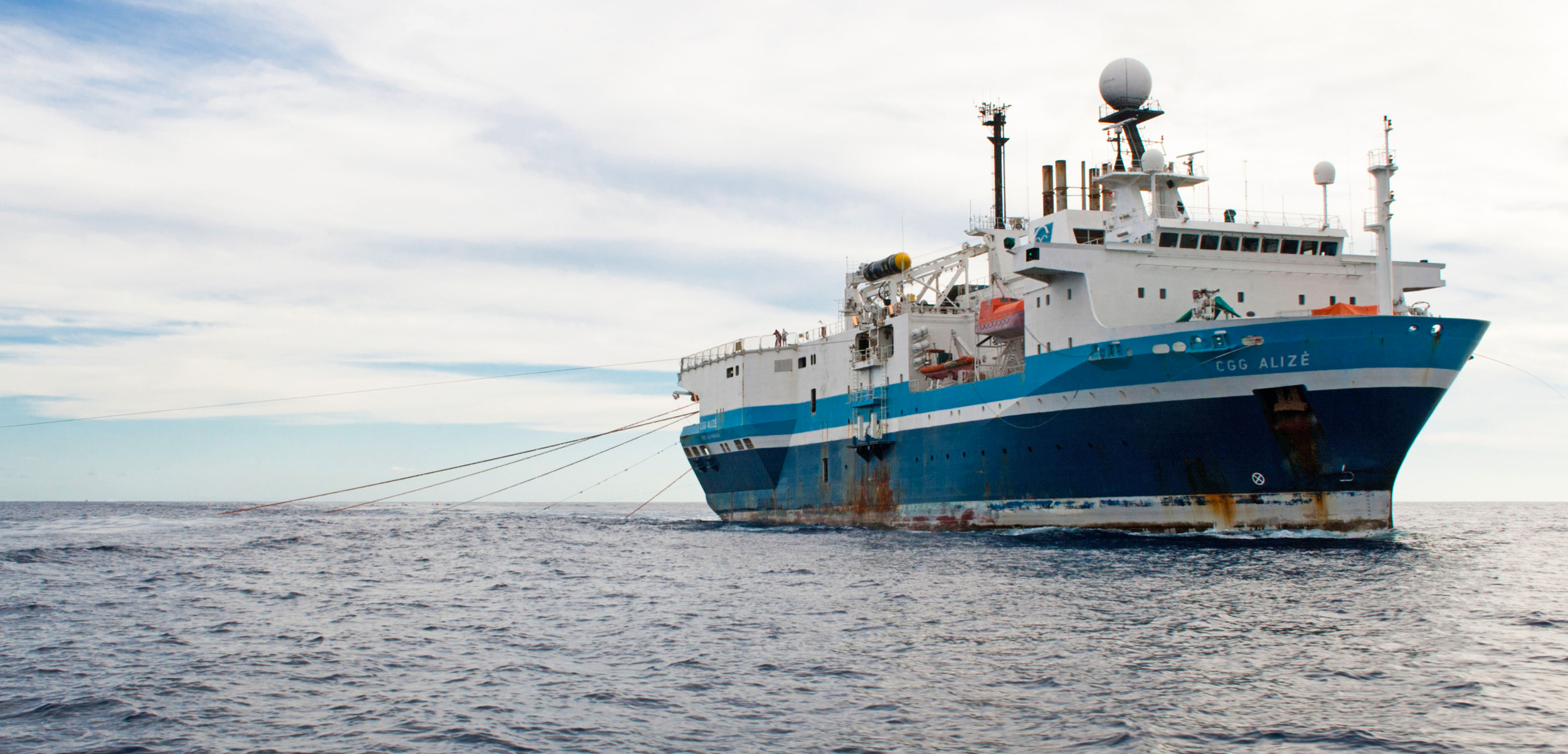Seismic Surveys Force Fish to Flee
New research reveals that reef fish hide from the sharp sounds of seismic airguns.
Article body copy
In September 2014, University of North Carolina doctoral candidate Avery Paxton was studying how fish use the reefs off North Carolina when she was told to pack her things and clear out for the week. A different research team was about to start blasting powerful airguns for seismic testing, and it was unsafe for anyone to be in the water.
As they packed up to depart, Paxton and her colleagues decided to take advantage of the situation and launch an opportunistic study. They left a few choice pieces of technology on the reef: video cameras and acoustic recorders.
“When you think of seismic testing, you often think of the impact to marine mammals,” Paxton says. Scientists have shown that seismic airguns—used for oil and gas exploration, as well as geological research—can interfere with marine mammal communication. “But I’m a reef biologist, so I’d always wondered, ‘What about the fish?’”
As seismic airguns are towed in an array behind a boat, they generate sharp, pulse-like bursts of sound—known as impulse noise. The blasts create low-frequency sound waves that penetrate deep into the ocean, and are used to visualize the structure of the seafloor. Impulse noise has been shown to physically affect fish.
To date, most research on fish and impulse noise has been conducted in captivity, says Doug Nowacek, an engineer at Duke University in North Carolina who worked with Paxton. Those earlier studies found a range of effects, including temporary hearing loss, swim bladder ruptures, and internal organ damage. Although field studies on wild fish are rare, a project in Scotland in 2001 found that reef fish were merely startled by airgun blasts.
What Paxton and Nowacek saw in North Carolina was much more dramatic: four out of every five fish left the reef during the seismic testing.* “That was really surprising to our team,” Paxton says.
Unfortunately, the video camera batteries died during the study, so the scientists can’t say exactly where the fish went, or when they returned. But Paxton suspects that the fish may have hidden in crevices, or gone to a nearby reef.
Prolonged fish absence from reefs could have consequences for local industries such as fishing and diving. “These reefs are really important habitat to the fish of this area,” Paxton says. “They serve as nursery grounds and they’re places where the fish can eat and hide from predators.”
For those concerned about the ecological implications of seismic noise, the study’s finding is worrisome.
Just before he left office, former US president Barack Obama barred the use of seismic surveying for oil and gas exploration off the US east coast.
“This study confirms that seismic blasting is harmful to the marine environment, as well as to fishermen who rely on these resources,” says Sierra Weaver, a senior attorney with the Southern Environmental Law Center. “Any further efforts to blast the southeast coast are going to need to overcome mounting evidence about its harm.”
Nowacek is more cautious in interpreting the study. “I think it’s another datapoint, and I do think it will help us in thinking about reef fish in particular,” he says.
But it does mean, says Paxton, that when considering potential ecological effects of seismic testing, “we can’t ignore the fish. We need to take them into account.”
*Correction: An earlier version of this story said that four out of five fish fled the reef following seismic testing. The fish actually left while the tests were ongoing.

